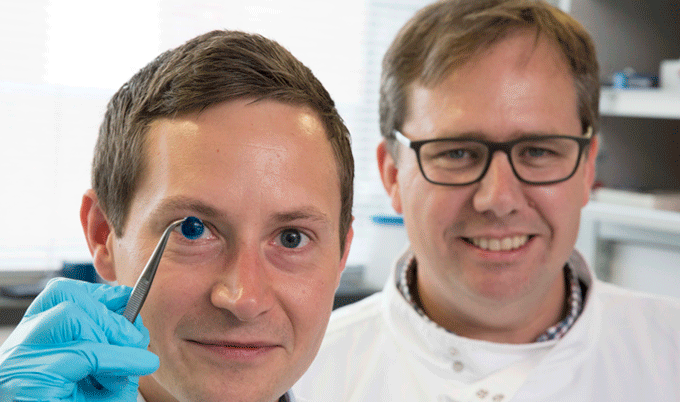Researchers at the University of Newcastle have managed to print human corneas using bioink materials. The research is the first of its kind, replicating one of the most crucial and complex organs in the body. In doing so, they have produced a workable model for creating the organs for replacement surgeries. The researchers achieved this impressive feat by making a gel comprised of crucial proteins and polysacharides.
The cornea is the outermost layer of the human eye, maintaining and focusing vision. As one can imagine, it’s quite difficult to procure corneas for transplant purposes. With over 10 million people requiring this crucial surgery due to diseases that afflict the region, Newcastle University might have found a crucial solution.
The bioink gel contains a mix of alginate, a polysaccharide derived from seaweed, and collagen. Collagen is a crucial protein for the cornea to function. The method required mixing in stem cells (human corneal stromal cells) from a healthy donor cornea. The new ink functions in a way that keeps the stem cells alive and also achieves a softness that makes it printable through a nozzle.
3D Printing Corneas
There has previously been a lot of adjacent research into the bio-production of eyes. None have gone this far into the functional side of things. Aside from getting materials right, the team also had to worry about achieving that concave shape. Thus, the bioink required an extrusion process that deposited it in concentric circles to form a shape reminiscent of the human eye. Surprisingly, the researchers did all this with a low-cost bio-printer.
The surgical application is still years away but the research presents a brilliant foundation. Much of our society is built around sight and thus for many blindness becomes an insurmoutable impediment to their lives. Although developed countries have cornea banks in case of transplant, others are not so fortunate. Even then, most countries can not keep up with transplant rates. Bio-printing has always represented an opportunity to correct many organ failures, so it is stepping in where needed. While printing eyes has always been a complex and have thus far been an illusive goal, this new research illuminates a way forward.
Featured image courtesy of Newcastle University, Dr. Steve Swioklo and Professor Che Connon.

 亞洲大學3D列印研究中心
亞洲大學3D列印研究中心

